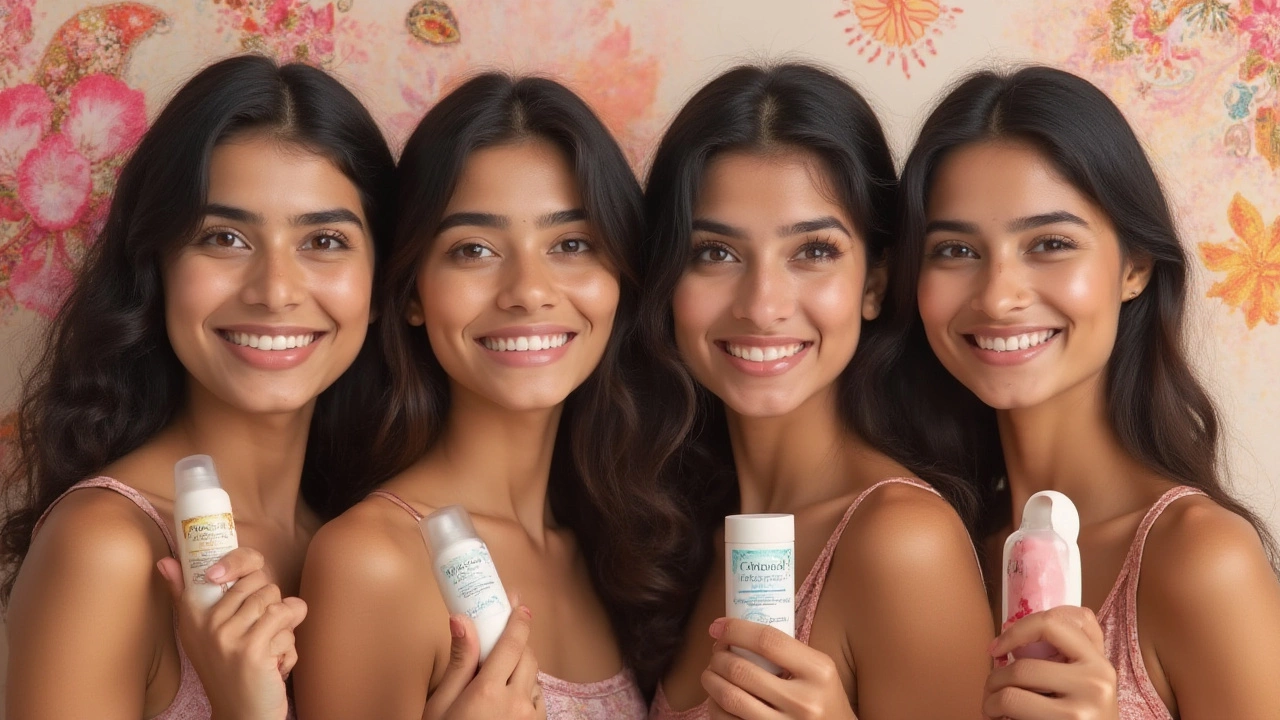
Ever notice how the person with truly glowing skin rarely says it's thanks to one miracle cream? You listen as they talk about their favorite serum, their devotion to sunscreen, or that new bit of tech—then there’s always the twist about how they swear by sleep, leafy greens, or (weirdly) something like gua sha. With thousands of products lining store shelves and social feeds crowded by skincare influencers, it's easy to wonder: Is there really one best skin treatment, or is it a clever myth? Spoiler—there’s not a single magic bullet, but some treatments clearly rise above the rest, whether you’re fighting wrinkles, acne, or just going after that baby-soft, even glow.
Understanding Your Skin Type and Unique Needs
Maybe you’ve felt the frustration: You buy what your friend insists works wonders—only to wake up with a face full of irritation. That’s skin types for you. Dermatologists break them down pretty simply: normal, dry, oily, combination, and sensitive. Each type reacts totally differently to the same cream or cleanser. Those viral Tiktok hacks? They might give someone with oily skin an unstoppable glow but leave a dry-skin person reaching for an ice pack.
If you’re not sure where you fit, start with a clean face and skip moisturizer for a couple of hours. Does it feel stretchy, flake, or show tightness around your mouth or cheeks? You’ve got dry skin. If your T-zone gleams by noon, you likely lean oily. A little of both? Combo skin’s your camp.
Why care? Wrong treatments can make problems worse. Retinol works magic on aging skin but can fry a sensitive face. Heavy oils comfort parched cheeks but can spark pimples if you’re oily. Spot-testing, checking ingredient lists, and talking with a real pro make all the difference. A study from the Journal of Dermatology (April 2024) found that about 60% of adult skin problems tracked back to mismatched products, not actual skin diseases. Basically, understanding your own skin is step one.
Evidence-Based Treatments for Common Skin Issues
The old “cleanse, tone, moisturize” routine isn’t dead, but it’s gotten an upgrade with new science and smarter ingredients. Here are the treatments experts agree actually work—for all the most common skin goals:
- Acne: Light therapy, like blue and red LED masks, is huge in 2025. They kill acne-causing bacteria and soothe redness with no downtime. Benzoyl peroxide and salicylic acid are still the gold standard for over-the-counter treatments—no magic, just results. For deeper cystic breakouts, dermatologists lean on prescription topicals like adapalene and clindamycin.
- Wrinkles and Aging: It’s no secret—retinoids are the king here. Tretinoin (prescription strength) or its cousin retinol (over-the-counter) actually boost collagen. New peptides and antioxidant serums, especially vitamin C, tackle both fine lines and dark spots. In-clinic treatments like microneedling or fractional lasers have gotten way safer and more effective according to a 2025 UCLA Medical Center review.
- Hyperpigmentation: Ingredients like tranexamic acid, niacinamide, and licorice have stolen the spotlight from hydroquinone, thanks to fewer side effects and strong evidence for fading dark spots. Chemical peels, especially those with lactic or glycolic acid, show the best bang for your buck when done by a pro.
- Sensitivity and Redness: Less is more. Look for minimal-ingredient moisturizers (think: ceramides, panthenol, green tea extract). Skip fragrance and heavy exfoliants. LED red light therapy continues to show results for calming inflammatory skin conditions like rosacea in clinical studies from 2024.
The big lesson? Consistency matters more than trend-chasing. Treatments that actually last—like daily sunscreen, gentle exfoliation a couple times a week, and retinoids if your skin can tolerate them—make way more impact long-term than flashy quick-fixes. See how the most popular treatments stack up?
| Treatment | Best For | Average Success Rate (%) | Time to See Results |
|---|---|---|---|
| Topical Retinoids | Aging, acne, texture | 80 | 8-12 weeks |
| LED Light Therapy | Acne, redness | 75 | 4-6 weeks |
| Hydrocolloid Patches | Pimples | 85 | Overnight |
| SPF 50+ Sunscreen | All skin types / Prevention | 95 | Immediate / ongoing |
| Laser & Microneedling | Scarring, wrinkles, texture | 70 | 2-6 months |

Professional Treatments: When to See a Skincare Expert?
Let’s be honest, slathering on a moisturizer has limits. Sometimes, you hit that skincare wall—your routine levels off, but the stubborn breakouts, redness, or “meh” texture refuse to budge. Enter the world of pro skin treatments. They sound intimidating (and sometimes expensive), but used right, they’re worth every penny.
Dermatologists swear by a few go-to clinic treatments in 2025. Microneedling, for example, is booming partly because downtime is so short. It’s basically controlled injury to your skin, which makes your body build fresh collagen—goodbye, fine lines and acne scars! Chemical peels, which sound scary, have gotten gentler and more customizable: light peels for sensitive skin, classic glycolic for uneven tone, deeper TCA for bigger issues.
Wondering about lasers? The tech has come a long way—fractional lasers target only tiny spots, so you heal fast. They’re now used for everything from sun damage to broken blood vessels. Intense Pulsed Light (IPL) is another favorite for color correction, whether from UV damage or just the joys of blushing. According to the American Academy of Dermatology’s 2025 survey, demand for pro treatments is up by 38% compared to pre-pandemic times. People want quicker, evidence-based results, especially if they’re juggling remote work, parenting, and general life chaos.
Before booking anything, though, find out if a treatment fits your skin type and check credentials. A pro will do a patch test, explain recovery, and actually listen to your goals—not just push a pricey bundle. Don’t forget the basics: pros can also coach you on a simple, cheap at-home routine that gives you more for less. When you see one, ask for a six-month plan, not a quick sell.
Daily Habits, Nutrition, and the Surprising Factors Behind Healthy Skin
Ask any skin expert why some people just look refreshed all the time, regardless of how many creams they use, and you’ll hear the same story—it’s daily habits, not secret formulas. Think of skin like a plant: Ignore the roots, and fancy leaf polish won’t matter. Let’s dig into what actually counts daily for better skin.
First, it’s all about best treatment for skin doesn’t always mean something you scoop out of a bottle. Hydration gets weirdly ignored. Data from the 2024 Global Skin Health Report showed that adults drinking three extra glasses of water a day saw a measurable difference in skin bounce and clarity after just four weeks. Sleep? It’s not just a cliché. Seven hours is non-negotiable if you want cell repair, less puffiness, and a true glow.
What you eat totally shows on your face, but not always how you expect. Antioxidant-rich foods—blueberries, spinach, avocados, and yes, good olive oil—can help your skin fight sun damage from the inside. Even acne-prone skin calms down with higher zinc and fewer ultra-processed snacks, proven in a 2024 Stanford study. If you smoke, that’s going to age you, no matter what treatments you use. Same with heavy drinking—it dehydrates your whole body, including your skin.
Other surprise factors? Stress is huge. Chronic stress boosts the hormone cortisol, which jumps up oil production and breaks down skin’s healing process. Short bouts of exercise a few times a week—nothing intense, think walking or Pilates—help lower cortisol and boost circulation, giving you actual rosy cheeks (not the blush kind). And don’t roll your eyes, but switching pillowcases twice a week and wiping down your phone screen keeps hidden bacteria off your face.
Skincare isn’t one-size-fits-all and it’s definitely not a race to buy the next viral product. Figure out your skin type, stick to evidence-backed treatments, and don't underestimate how much your daily choices matter. Consistent, gentle care wins every time—even if nobody ever launched a hashtag for it.
 Hair Care
Hair Care